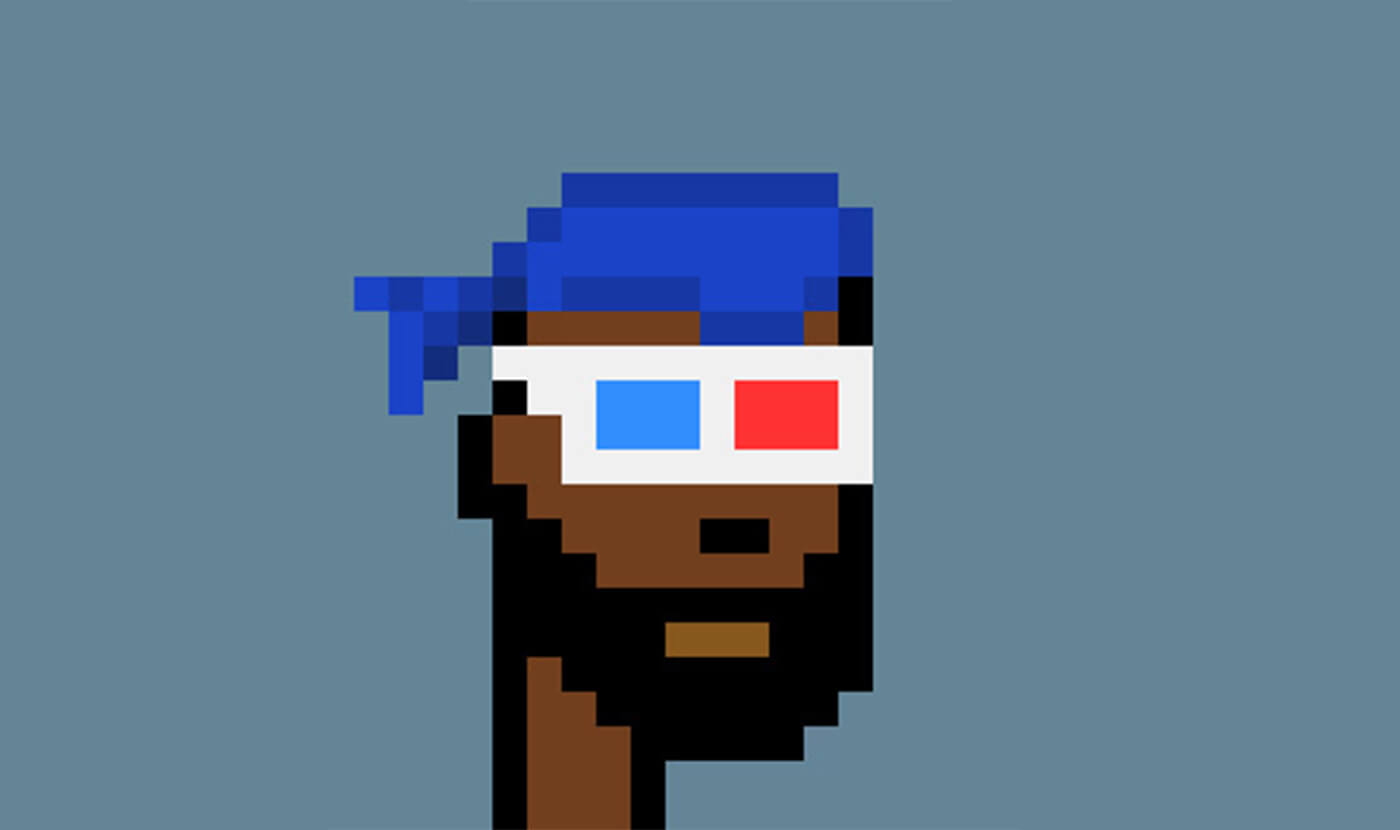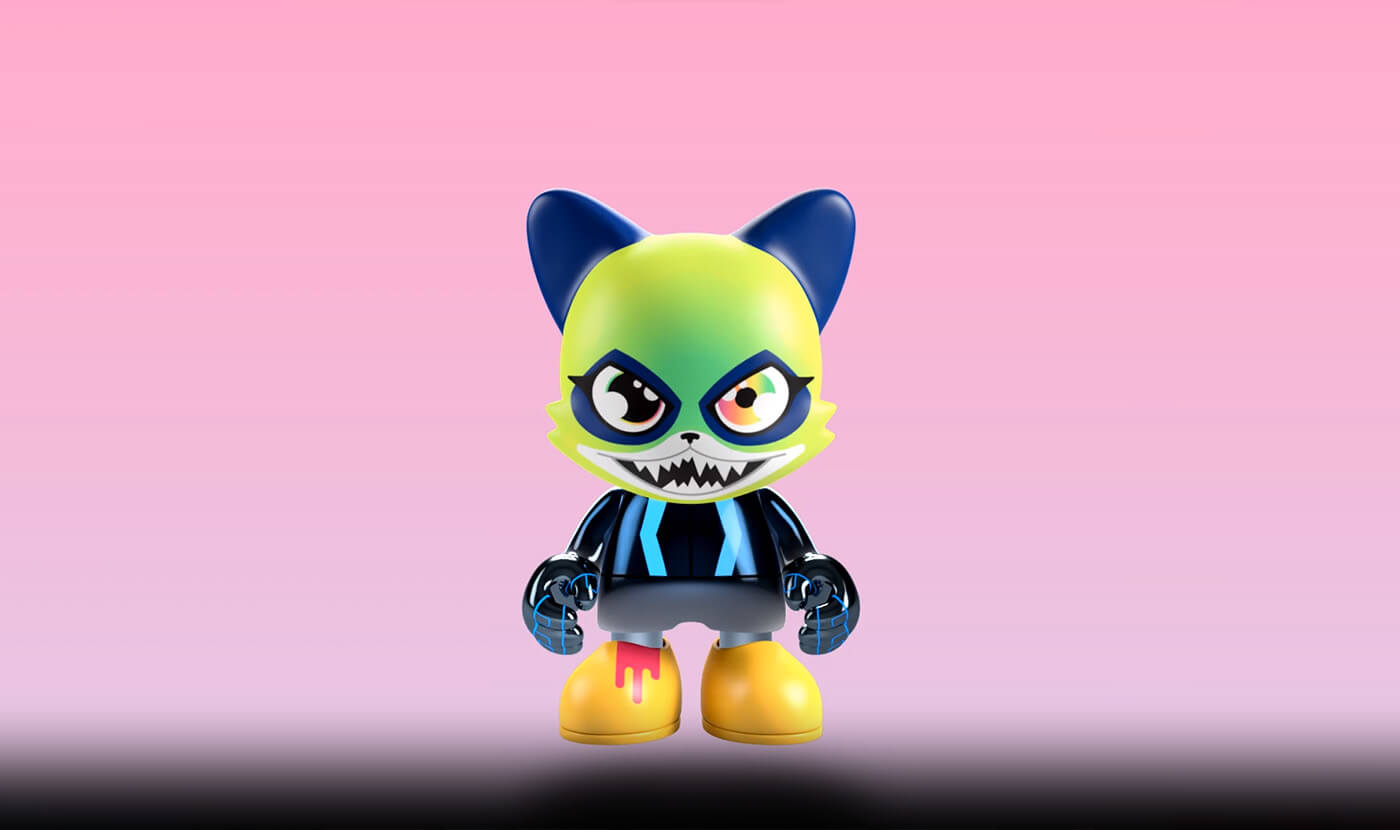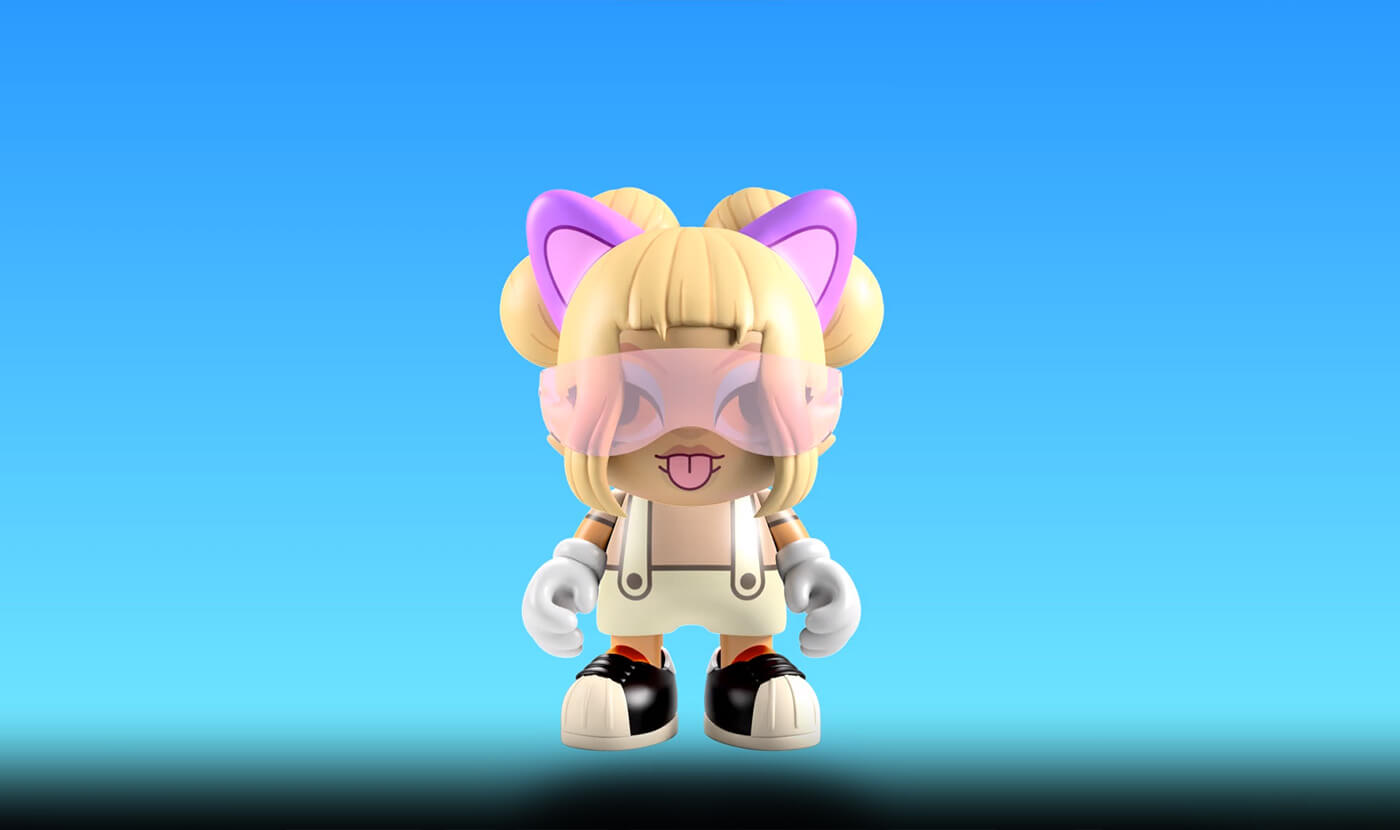- Summary
- Chapter 01 - What is an NFT?
- Chapter 02 - Why Create an NFT Collection?
- Chapter 03 - Benefits and Cost of Your NFT Collection
- Chapter 04 - A Comparative Guide of Blockchain Platforms for Emitting Your NFT Collection
- Chapter 05 - Automatic Tools for Creating Your NFT Collection
- Chapter 06 - Unlocking the Potential of AI in NFT Creation

How To Create An NFT Collection
- Read time 10min
- published 2023.04.14 updated 2024.02.16
-
what
- Blog
- digital asset
A complete guide about everything NFT-related
What is an NFT?
An NFT, or non-fungible token, is a type of digital asset that represents ownership of a unique item or piece of content. Unlike traditional, fungible cryptocurrencies like Bitcoin, which are interchangeable with one another and have a fixed value, NFTs are unique and cannot be replicated or replaced.
The technology behind NFTs is built on blockchain, which is a decentralized digital ledger that allows for secure and transparent tracking of transactions. NFTs are also powered by smart contracts, which are self-executing contracts with the terms of the agreement directly written into code.
Non-fungibility is a key aspect of NFTs, as it allows for the creation and trading of unique digital assets. This means that each NFT is unique and cannot be replicated or replaced, making them valuable and desirable to collectors and enthusiasts.
There are a wide variety of assets that can be represented as NFTs, including digital art, videos, music, and collectible items. For example, an artist may create a digital painting and sell it as an NFT, which can then be bought and sold on the open market. Similarly, a musician may release a music video as an NFT, allowing fans to own a unique piece of their favorite artist’s work. Additionally, virtual collectibles such as CryptoKitties and CryptoCollectibles are popular among users.
Overall, NFTs represent a new and exciting frontier in the digital world, offering a new way for creators and collectors to monetize and appreciate unique digital assets.
Examples of Popular NFT Collections
Some of the most well-known and successful NFT collections include CryptoKitties, NBA Top Shot, World of Women, Bored Apes and CryptoPunks. These collections have gained popularity among users for their unique features and ability to generate a significant return on investment for early buyers.
CryptoKitties, launched in 2017, is one of the first and most popular NFT collections. It is a virtual collectible game in which players can buy, sell and breed virtual cats using Ethereum blockchain. The unique feature of CryptoKitties is that each cat is unique, with its own set of genetic traits, making them desirable to collectors.
NBA Top Shot, launched in 2020, is an NFT collectible platform featuring officially licensed NBA highlights and moments. The platform allows users to buy, sell and trade officially licensed NBA highlights in the form of NFTs, each of which is unique and verifiable on the blockchain. The unique feature of NBA Top Shot is that it allows users to own a piece of NBA history, a feature that has gained popularity among fans and collectors.
World of Women, is an NFT collection featuring digital portraits of inspiring women, it was launched in 2021. The project aims to empower and celebrate women and their achievements. The unique feature of World of Women is that it is one of the first NFT collections to highlight the important role of women in society, making it desirable to collectors who are interested in supporting this cause.
Bored Apes, is an NFT collection featuring digital apes that was launched in 2021 and quickly gained popularity due to its unique concept and design. The collection features thousands of unique apes, each one represented as an NFT. The unique feature of Bored Apes is that it is one of the most hyped NFT collections of the moment, having generated a lot of buzz on social media, and it was also joined by several celebrities, making it desirable to collectors.
CryptoPunks, launched in 2017, is one of the first NFT collections on the Ethereum blockchain. It features 10,000 unique 8-bit characters, each one represented as an NFT. The unique feature of CryptoPunks is that it is one of the first and most popular NFT collections, and its scarcity and historical significance have made them desirable to collectors.
Overall, these popular NFT collections have gained popularity for their unique features, such as the ability to own a piece of digital art, a piece of history, a unique digital collectible or supporting a cause. Early buyers of these NFTs have also seen a significant return on investment as the demand for these unique digital assets has grown.
Why Create an NFT Collection?
Creating an NFT collection can provide a number of benefits for businesses and creators. These benefits include building a community, rewarding existing customers, by airdropping digital collectibles, and reducing acquisition costs. Additionally, NFTs can be used as a marketing tool to increase brand awareness and customer engagement.
Building a community is the key goal of creating an NFT collection. NFTs allow businesses and creators to connect with their customers and fans in a new and exciting way. By creating a unique and limited collection of digital assets, businesses and creators can foster a sense of exclusivity and community among their fans. This helps to build brand loyalty and strengthen relationships with customers.
Rewarding existing customers is another aim of creating an NFT collection. NFTs can be used as a reward or loyalty program, allowing businesses and creators to reward their most dedicated fans with unique and valuable digital assets. This can help to increase customer engagement and retention.
Using proof of experience collectibles is a very interesting way of incentivizing users to engage with a platform or product. It could be used to reward users for completing certain actions, such as watching a video or visiting a website. This can help to increase brand awareness and customer engagement.
NFTs can also provide an additional revenue stream for businesses and creators. NFTs allow creators to monetize their work in new and innovative ways. By creating and selling unique digital assets, businesses and creators can earn revenue from their work without having to rely on traditional channels such as galleries or record labels. Non-fungible tokens display a very important role in democratizing the art world by providing a new way for artists to sell their work directly to collectors. This can allow artists to bypass traditional gatekeepers and reach a global audience.
Finally, with the rise of web3 and decentralized technologies, brands are increasingly recognizing the importance of having a presence on the blockchain. NFTs allow brands to tap into new audiences, use new monetization methods and offer new ways of interacting with their customers. Therefore, brands are starting to realize that going from web2 to web3 is necessary in order to survive in the digital landscape.
Overall, creating an NFT collection can provide a number of benefits for businesses and creators, including building a community, rewarding existing customers, using POAPs, and providing an additional revenue stream. NFTs can also democratize the art world and be a way for brands to transition from Web2 to Web3.
Benefits and Cost of Your NFT Collection
NFTs, or non-fungible tokens, have a wide range of potential uses and utilities. One of the most popular uses of NFTs is as digital art, allowing artists to monetize and sell their work in a new and innovative way. NFTs can also be used as gaming items, such as unique weapons or armor in a video game, providing an additional layer of immersion and engagement for players or represent collectibles, such as trading cards or figurines, providing a new way for fans to collect and display their favorite items.
NFTs also represent the creation of unique experiences for users. For example, NFTs can be used to represent virtual reality experiences, such as a virtual concert or museum tour or create interactive games, such as scavenger hunts or puzzles, that can be solved to unlock unique digital assets.
Another potential use of NFTs is to represent ownership of real-world assets, such as real estate or collectible cars. NFTs can be used to represent ownership of a physical asset, allowing it to be easily bought and sold on the open market. This could open up new opportunities for real estate developers and car manufacturers to monetize their assets in a new way.
Overall, NFTs have a wide range of potential uses and utilities. From digital art to gaming items and collectibles, NFTs can be used to create unique experiences for users, as well as represent ownership of real-world assets. When creating an NFT collection, it is important to consider the different ways in which NFTs can be used and how they can add value to your business or project.
Non-fungible tokens (NFTs) are typically created and distributed on blockchain platforms, such as Ethereum, Binance Smart Chain, and Flow (more information below). One of the key costs associated with creating and distributing NFTs is gas fees.
Gas fees are the cost of executing a transaction on the blockchain. They vary depending on the blockchain being used and can fluctuate based on network congestion. For example, on the Ethereum blockchain, gas fees can range from a few cents to several dollars. On the Binance Smart Chain, gas fees are generally lower than Ethereum. And on Flow blockchain, it’s designed to be more affordable and efficient for digital asset creation and exchange.
When it comes to distributing NFTs, there are several options available. One popular method is through an airdrop, where tokens are distributed for free to a specific group of people. Another option is to sell NFTs on a Web3 marketplace, such as OpenSea, Rarible, SuperRare and Exclusible.
A Comparative Guide of Blockchain Platforms for Emitting Your NFT Collection
When it comes to creating and managing your own NFT collection, one of the most important decisions you’ll need to make is choosing the right blockchain platform. In this chapter, we’ll take a closer look at three of the most popular blockchain platforms for NFTs: Ethereum, Binance Smart Chain, and Flow. We’ll compare and contrast their features, and highlight the pros and cons of each, to help you make an informed decision about which platform is best for your specific needs and goals.
Ethereum:
Pros: Ethereum is the most widely used blockchain platform for NFTs, and has a large and active community of developers and users. It also supports a wide range of programming languages, making it easy to create and manage your own NFTs.
Cons: One of the main downsides of Ethereum is that it can be quite expensive to use, due to high gas fees. Additionally, it can also be slow and congested, which can make it difficult to quickly create and manage your NFTs.
Binance Smart Chain:
Pros: Binance Smart Chain is a newer blockchain platform that is gaining popularity among NFT creators. It’s much cheaper to use than Ethereum, with significantly lower gas fees. It’s also faster and more scalable, which makes it a great option for NFT creators who need to quickly create and manage a large number of NFTs.
Cons: Binance Smart Chain is still relatively new, which means that there may be some limitations in terms of community support and developer resources.
Flow:
Pros: Flow is a blockchain platform that is specifically designed for NFTs and other digital assets. It has a very fast and efficient blockchain architecture that enables fast and cheap creation and management of NFTs. It also has a strong community of developers and users, and it’s supported by some big companies in the gaming and entertainment industries.
Cons: Flow is relatively new, and it only supports a few programming languages, which may limit the use cases and the creation of NFTs.
When it comes to choosing the right blockchain platform for your NFT collection, it’s important to consider your specific needs and goals. If you’re looking to create a large number of NFTs quickly and efficiently, then Binance Smart Chain or Flow may be the best option for you. However, if you’re looking for a more established platform with a large and active community of developers and users, then Ethereum may be the better choice. Ultimately, the key is to do your research and carefully evaluate the pros and cons of each platform before making a decision.
Smart Contract Standards for NFTs
When creating NFTs, it’s important to understand the different smart contract standards that are available. These standards determine how NFTs are created, managed, and transferred on the blockchain. In this chapter, we’ll take a closer look at six of the most popular smart contract standards for NFTs: ERC-721, ERC-1155, ERC-998, BEP-721, BEP-1155, and SIP-009.
ERC-721: A smart contract standard for non-fungible tokens (NFTs) on the Ethereum blockchain. It was the first widely adopted standard for NFTs, allowing for the creation of unique digital assets that cannot be replaced or exchanged for an exact equivalent. Examples include CryptoKitties and in-game items like CryptoVoxels. Advantages: Allows for unique NFTs and supports metadata. Disadvantages: Does not support batch transfer and is relatively expensive.
ERC-1155: An extension of ERC-721, allowing for the creation of both fungible and non-fungible tokens within a single smart contract. This allows for greater flexibility in creating digital assets and can also lead to cost savings by reducing the number of smart contracts required. Advantages: Allows for both unique and fungible NFTs and supports batch transfer. Disadvantages: Relatively new and not as widely used as ERC-721.
ERC-998: A smart contract standard that allows for the combination of different token standards within a single smart contract, allowing for the creation of complex digital assets with various attributes and functionality. Advantages: Allows for the creation of composable NFTs and supports metadata.
Disadvantages: Relatively new and not as widely used as ERC-721.
BEP-721: A smart contract standard for creating unique, non-fungible digital assets on the Binance Smart Chain. Advantages: Allows for the creation of unique NFTs and built on Binance Smart Chain which is faster and cheaper than Ethereum. Disadvantages: Relatively new and not as widely used as ERC-721.
BEP-1155: A smart contract standard similar to ERC-1155, for creating unique and fungible digital assets on the Binance Smart Chain. Advantages: Allows for the creation of both unique and fungible NFTs and built on Binance Smart Chain. Disadvantages: Relatively new and not as widely used as ERC-721.
SIP-009: A smart contract standard for NFTs on the Polygon network based on the ERC-721 standard. Allows for the creation of unique, non-fungible tokens.
When choosing a smart contract standard for your NFT collection, it is important to consider the following factors:
The type of NFT you want to create (fungible, non-fungible, or a combination of both). The functionality and attributes you want your NFTs to have. The blockchain network you want to use (Ethereum, Binance Smart Chain, or Polygon).
In summary, ERC-721, ERC-1155, ERC-998, BEP-721, BEP-1155, SIP-009 are smart contract standards for NFTs. ERC-721 is for non-fungible tokens on Ethereum blockchain, ERC-1155 is an extension of ERC-721 that allows for the creation of both fungible and non-fungible tokens, ERC-998 allows for combination of different token standards, BEP-721 and BEP-1155 are for Binance Smart Chain, SIP-009 is for Polygon network. When choosing a smart contract standard, consider the type of NFT, functionality, attributes, blockchain network, community support, development activity, transaction fees and scalability of the blockchain network.
Automatic Tools for Creating Your NFT Collection
Creating an NFT collection can be a daunting task, especially for those who are new to the world of crypto art. However, there are a variety of automatic tools that can simplify the process and make it easier for anyone to create their own collection. In this chapter, we will introduce different tools that can help you create and manage your NFT collection, including NFT creation platforms and marketplaces.
NFT Creation Platforms:
OpenSea: OpenSea is one of the most popular NFT creation platforms, allowing users to create, sell, and buy NFTs. It features a user-friendly interface, a variety of customizable templates, and a built-in marketplace for buying and selling NFTs. Pricing is on a commission basis, and it’s free to list and sell your NFTs. However, OpenSea has some limitations, such as not having an in-built community building feature, which is an important aspect for a successful digital collectible.
Rarible: Rarible is another popular NFT creation platform, which allows users to create and sell their own NFTs. It features a built-in marketplace for buying and selling NFTs, and a variety of customizable templates for creating your own NFTs. Pricing is on a commission basis and it’s free to list and sell your NFTs. However, similar to OpenSea, Rarible lacks community building features.
These are two most popular NFT creation platforms, but there are many more that may be more specialized or tailored to your needs. It’s important to do your own research and find the platform or marketplace that best suits your needs.
In summary, the automatic tools for creating your NFT collection include NFT creation platforms such as OpenSea, Rarible, SuperRare, and NFT marketplaces such as Nifty Gateway, KnownOrigin. Each platform and marketplace has its own features, pricing, and community, so it’s important to find the one that best suits your needs.
Unlocking the Potential of AI in NFT Creation
The world of non-fungible tokens (NFTs) has exploded in recent years, with digital art and collectibles becoming increasingly popular. However, creating unique and visually stunning artwork for NFTs can be a challenge for many creators. This is where artificial intelligence (AI) comes in. With the help of AI, creators can generate high-quality artwork and NFT assets, making it easier and more efficient to create NFT collections that stand out in the market.
One of the most popular AI tools for generating artwork is DALL-E. This platform uses deep learning algorithms to generate images based on text prompts, allowing users to create unique and customized artwork. For example, a user could input “”A futuristic cityscape with flying cars”” and DALL-E would generate a corresponding image. DALL-E is easy to use and offers a wide range of customization options, making it a great option for those looking to create unique and visually stunning NFT assets.
Another popular AI tool for generating artwork is MidJourney. This platform uses a neural network to generate images based on a specific style or theme. For example, a user could input “”abstract art”” and MidJourney would generate a corresponding image in that style. Unlike DALL-E, MidJourney’s generated images are not unique, but it’s great for creators who want to create a series of NFTs in a consistent style.
AI tools like DALL-E and MidJourney are not only great for generating artwork, but also for creating other types of NFT assets, such as 3D models and animations. They offer a wide range of customization options and are relatively easy to use, making them accessible to creators of all skill levels.
In summary, AI tools like DALL-E and MidJourney can be used to generate unique and visually stunning artwork for NFTs, making it easier and more efficient for creators to create NFT collections that stand out in the market. However, the importance of the artist should not be overlooked in the Web3 space. The artist’s vision, creativity and interpretation of the AI generated images are essential in creating truly unique and valuable NFTs. The artist’s role in combining the technical capabilities of AI with their own artistic vision and interpretation is what sets NFTs apart from other digital art forms and makes them a valuable and exciting addition to the art world in Web3.
The Future of Art is Now: Final Thoughts on Crafting a Stunning NFT Collection
In conclusion, the world of non-fungible tokens (NFTs) is a vast and exciting one that offers a wide range of possibilities for creators and collectors alike. This article has covered key topics such as what an NFT is, popular NFT collections, the benefits of creating an NFT collection, the cost of NFT creation and distribution, and a comparative guide of blockchain platforms for emitting your NFT collection. Additionally, we explored the importance of smart contract standards for NFTs and automatic tools for creating your NFT collection, and how AI can be used to generate stunning artwork for NFTs.
Creating an NFT collection can be a daunting task, but with the right tools and resources, it can be a rewarding and fulfilling experience.






